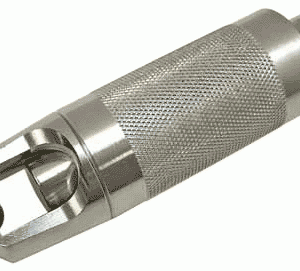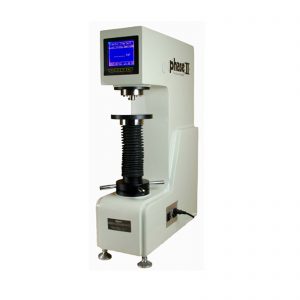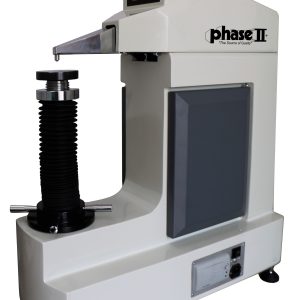No products in the cart.
Return To ShopDifference Between Vickers and Knoop hardness test
In a vast array of industries, engineers, production teams, and manufacturers rely on various hardness testing methods to assess the mechanical properties of materials accurately. Among these methods, the Vickers and Knoop hardness tests are widely used for their versatility and precision. While it is true we have covered Vickers testing extensively, often the two get confused for one another to those who are not in the trenches day to day. That is why we’ll explore the differences between these two tests, their respective advantages, and when each test is best suited for specific applications.
Understanding Vickers Hardness Testing
The Vickers hardness test is a microhardness testing method that measures the resistance of a material to indentation. A Vickers hardness tester presses a diamond-shaped indenter with a specific load into the surface of the material and measuring the diagonal lengths of the resulting indentation. The Vickers hardness value is calculated based on the applied load and the surface area of the indentation.
Understanding Knoop Hardness Testing
The Knoop hardness test is another microhardness testing method that measures the resistance of a material to indentation. It utilizes a rhombic-based pyramid-shaped indenter with a specific load to create an elongated, diamond-shaped indentation on the material’s surface. The length of the long diagonal of the indentation is measured to determine the Knoop hardness value.
Key Differences Between Vickers and Knoop Hardness Tests
Indenter Shape
- Vickers: The Vickers hardness test uses a diamond-shaped indenter with a symmetrical pyramid shape.
- Knoop: The Knoop hardness test employs a rhombic-based pyramid-shaped indenter with a more elongated shape.
Indentation Geometry
- Vickers: The Vickers test creates a square-shaped indentation with well-defined corners.
- Knoop: The Knoop test creates an elongated, diamond-shaped indentation with one pointed end and one rounded end.
Indentation Size
- Vickers: Vickers indentations are typically larger and more visible than Knoop indentations.
- Knoop: Knoop indentations are smaller and more elongated compared to Vickers indentations.
Load and Time Requirements
- Vickers: The Vickers test requires higher loads and longer indentation times compared to the Knoop test.
- Knoop: The Knoop test uses lower loads and shorter indentation times compared to the Vickers test.
Material Suitability
- Vickers: Vickers hardness testing is suitable for a wide range of materials, including metals, ceramics, and composites.
- Knoop: Knoop hardness testing is particularly useful for testing brittle materials, such as ceramics and glass.
When to Use Vickers Hardness Testing
Testing Metallic Materials
Vickers hardness testing is ideal for assessing the hardness of metallic materials, including ferrous and non-ferrous alloys.
- Standardized Testing: Vickers hardness testing is commonly used in standardized testing methods, making it suitable for comparing hardness values across different materials.
- Macrohardness Testing: While primarily a microhardness test, Vickers hardness testing can also be adapted for macrohardness testing of larger samples.
- General Purpose Testing: Vickers hardness testing is versatile and well-suited for general-purpose hardness testing across various industries and applications.
When to Use Knoop Hardness Testing
Testing Brittle Materials
Knoop hardness testing is best suited for testing brittle materials, such as ceramics, glass, and thin films.
Surface Coating Evaluation
Since the test indentation is very small in a Knoop test, it is useful for a variety of surface testing, including very thin materials like foils or measuring the surface of a part. This could include thin layers and coatings applied to substrates.
Microhardness Testing
Knoop hardness testing is primarily a microhardness test and is well-suited for assessing the hardness of small and delicate samples. Sectioning is usually necessary with a microhardness test to provide a small enough specimen that can fit into the tester.
Indentation Size Control
Knoop hardness testing allows for precise control over indentation size and shape, making it suitable for applications where smaller indentations are required.
Conclusion
In summary, both Vickers and Knoop hardness tests offer valuable insights into the mechanical properties of materials, but they differ in terms of indenter shape, indentation geometry, load requirements, and material suitability. While Vickers hardness testing is versatile and widely used for metallic materials and general-purpose testing, Knoop hardness testing excels in evaluating brittle materials and surface coatings. By understanding the differences between these two tests and their respective advantages, metallurgical engineers can make informed decisions about which hardness testing method is best suited for their specific applications.
METSUCO has been a leading supplier of hardness testing machines and blocks for over 30 years. We serve not only industries such as oil and gas, aerospace, automotive, and heavy manufacturing but also universities and quality testing labs. Call 713-827-0700 or email sales@metsuco.com with inquiries.
















